Noodle soups have become the unsung heroes of the culinary world, capturing the hearts and taste buds of food enthusiasts across the globe. These steaming bowls of goodness offer a comforting and satisfying experience that transcends cultural boundaries. Today, let’s dive into the world of noodle soups and explore three popular varieties that have taken the gastronomic scene by storm: Ramen, Pho, and Udon.

Importance of Noodle Soups in Various Cuisines
Noodle soups hold a special place in the hearts of many cultures, serving as a symbol of comfort, tradition, and culinary artistry. They possess a magical ability to warm both body and soul, making them the ultimate comfort food. Whether slurped up at a street-side stall or enjoyed in a high-end restaurant, noodle soups have a unique way of connecting people to their heritage and creating unforgettable memories.
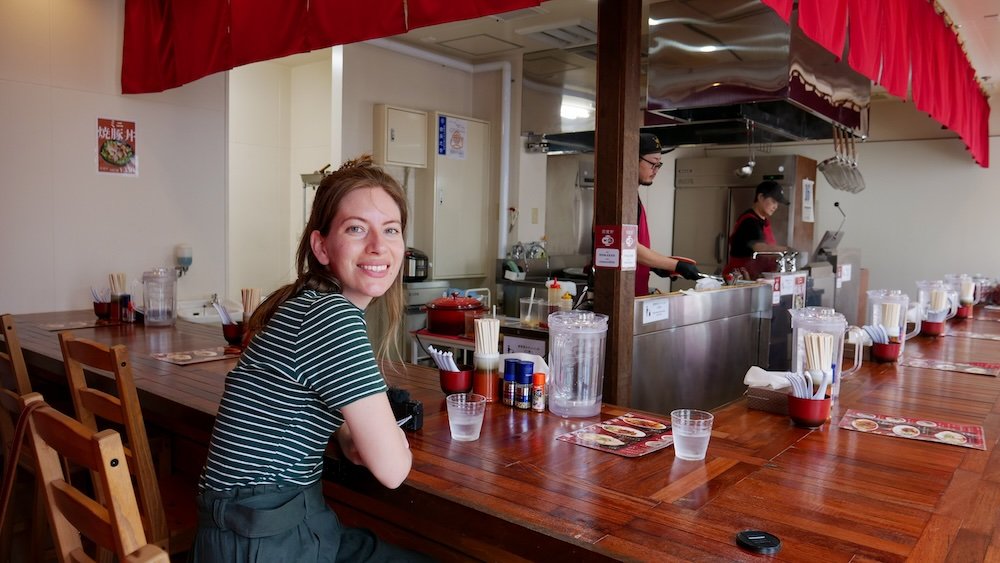
Popular Noodle Soups: Ramen, Pho, and Udon
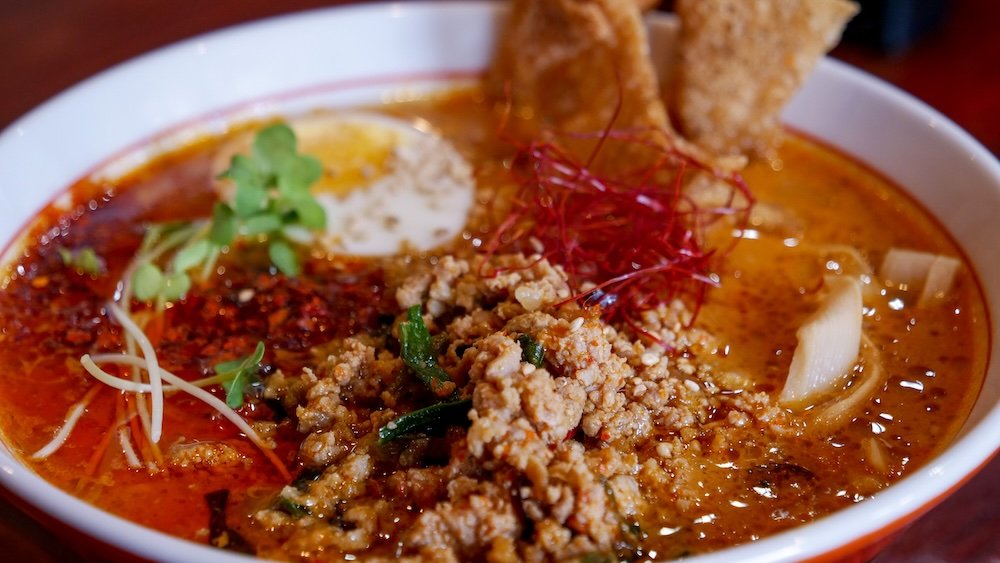
Ramen: The Rockstar of Noodle Soups
Originating from Japan, ramen has garnered a cult following worldwide. This soul-soothing soup features long, chewy noodles bathed in a rich and flavorful broth. The variations of ramen are as diverse as the tastes of its fans. From the classic shoyu (soy sauce) and shio (salt) broths to the robust miso and creamy tonkotsu (pork bone) bases, each bowl of ramen tells a unique story. The toppings are equally enticing, with tender slices of chashu (braised pork), marinated soft-boiled eggs, nori (seaweed), and an array of crunchy vegetables. Ramen is not just a meal; it’s a culinary adventure that leaves you craving for more.
Pho: The Essence of Vietnamese Cuisine
Originating in Vietnam, pho has gained international acclaim for its delicate flavors and aromatic broth. A bowl of pho consists of silky rice noodles, bathed in a fragrant beef or chicken broth, and adorned with tender slices of meat. The broth is a labor of love, simmered for hours with an exquisite blend of spices like star anise, cinnamon, and cloves, resulting in a symphony of flavors. A plate of fresh herbs, lime wedges, bean sprouts, and chili peppers is served alongside, allowing you to customize your pho to perfection. This heartwarming bowl of goodness is a true embodiment of Vietnamese culinary heritage.
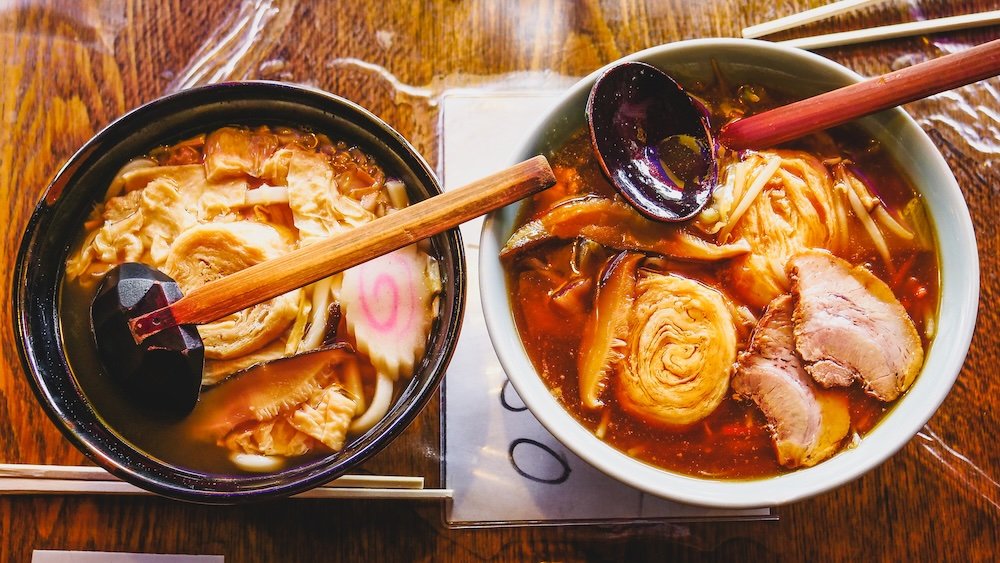
Udon: The Thick and Chewy Delight
Hailing from Japan, udon noodles are thick, chewy, and oh-so-satisfying. Udon soup showcases a delightful harmony of flavors, where the noodles swim in a delicate yet robust broth, made from dashi (a Japanese stock) and soy sauce. The toppings can vary, ranging from tempura (battered and deep-fried seafood or vegetables) to thinly sliced green onions and grated ginger. Udon noodles have a unique ability to absorb the flavors of the broth, resulting in a mouthwatering experience with each slurp. Whether enjoyed hot or cold, udon is a testament to the art of simplicity in Japanese cuisine.
Noodle soups have become culinary treasures that transcend borders, bringing joy and comfort to people around the world. The trinity of ramen, pho, and udon represents the pinnacle of noodle soup craftsmanship, each offering a distinctive experience that tantalizes the taste buds. So, the next time you find yourself in need of a heartwarming meal, embrace the magic of these noodle soups and embark on a culinary adventure like no other.

Ramen: Origin and History of Ramen
Ramen, the undisputed rockstar of noodle soups, has a fascinating origin rooted in Japan’s culinary landscape. While its exact beginnings are somewhat mysterious, ramen can be traced back to the late 19th century when it was introduced to Japan by Chinese immigrants. Initially known as “shina soba” (Chinese soba), it underwent a remarkable transformation over the years to become the beloved dish we know today.

Key Components of Ramen

Broth: The Heart and Soul of Ramen
At the core of every bowl of ramen lies the soul-warming broth. It serves as the canvas on which the entire flavor profile of the dish is built. Ramen broths come in a delightful variety, each with its own distinct personality. The rich and creamy tonkotsu broth, made by simmering pork bones for hours until they release their collagen and essence, is a true indulgence. For those seeking a lighter option, there’s the soy-based shoyu broth, the salt-based shio broth, and the miso broth, which adds a tangy and earthy note to the mix.
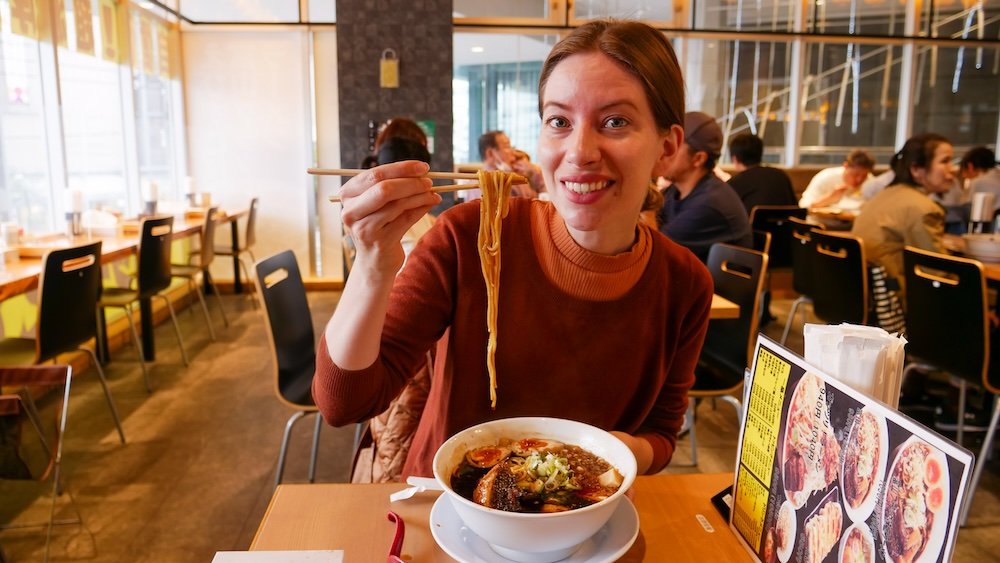
Noodles: The Long and Winding Strands
The choice of noodles in ramen is crucial, as they provide the foundation for the entire dish. Ramen noodles come in various shapes, lengths, and textures, ranging from thin and straight to thick and curly. They can be wavy or straight, depending on the region and style of ramen. The texture of the noodles can range from firm and chewy to tender and delicate, each offering a unique mouthfeel. Achieving the perfect balance of springiness and flavor absorption is a true art form in the world of ramen.
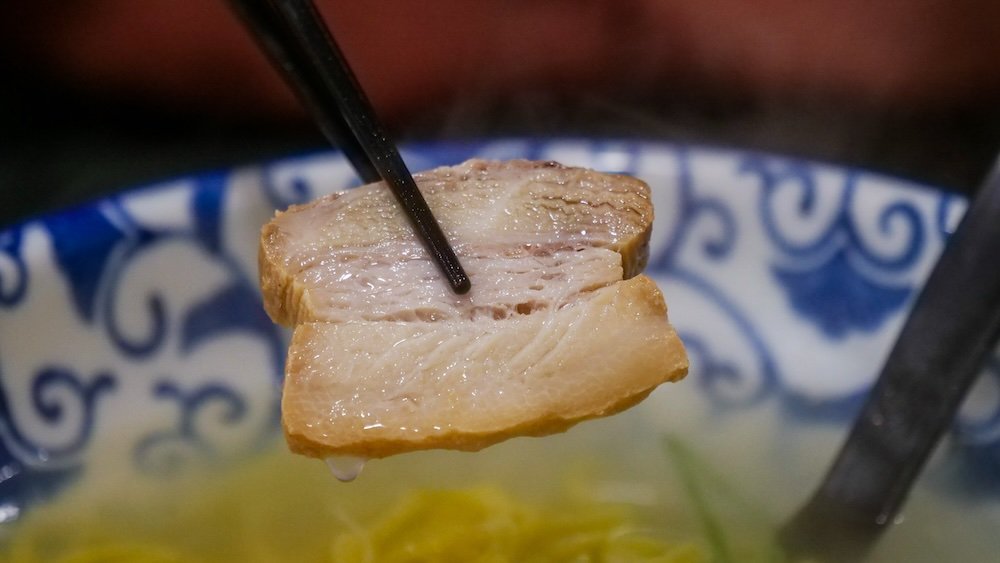
Toppings: The Finishing Touches
Ramen is a symphony of toppings that elevate the dish to new heights. Among the most beloved is chashu, succulent slices of braised or roasted pork belly that melt in your mouth. A soft-boiled egg with a gooey yolk adds richness and depth to the broth. Nori, a sheet of toasted seaweed, lends a hint of umami. Other common toppings include bamboo shoots, sliced green onions, corn, bean sprouts, and mushrooms. These toppings not only enhance the visual appeal of the dish but also contribute to its overall flavor profile.
source: Samuel and Audrey on YouTube
Regional Variations of Ramen in Japan
Across the different regions of Japan, ramen has evolved into distinct styles, each with its own regional flair. Hokkaido, the northernmost island, boasts rich and hearty ramen featuring miso-based broths and buttery corn toppings. Tokyo-style ramen, known as “chuka soba,” offers a clear soy-based broth with thin and straight noodles. The Kyushu region is renowned for its tonkotsu ramen, characterized by its creamy pork broth and thin, straight noodles. These regional variations showcase the creativity and diversity of ramen throughout Japan.
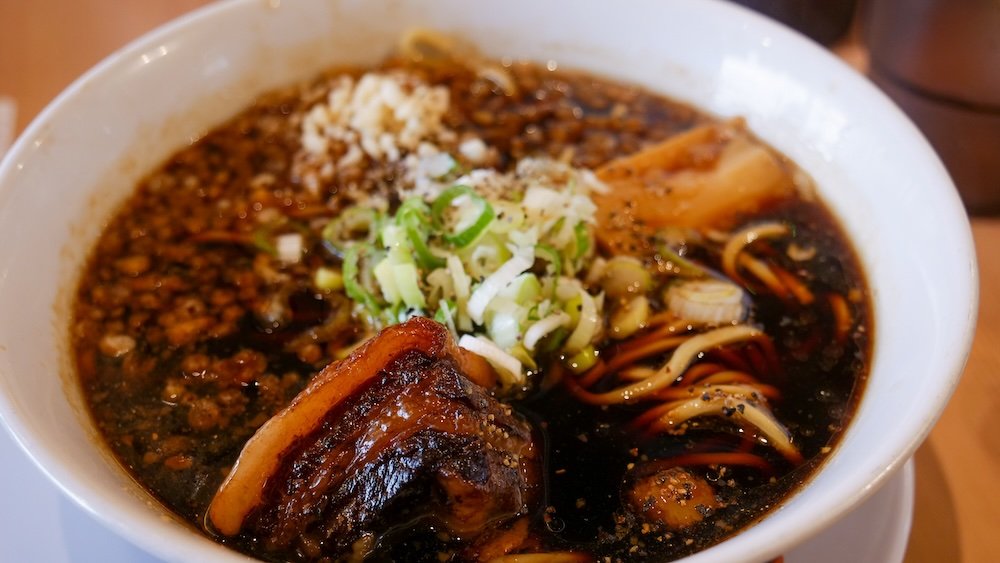
Ramen Etiquette and Eating Customs
When it comes to enjoying ramen, there are a few etiquette and customs worth knowing. First and foremost, slurping is not only acceptable but encouraged! Slurping noodles not only cools them down, but it also enhances the flavors by aerating the broth. Additionally, it is customary to show appreciation to the chef by finishing the entire bowl of ramen, leaving no noodles behind. And don’t forget the “kaeshi,” the broth remaining in the bowl. Many ramen shops provide a small portion of rice that can be added to the remaining broth, creating a delectable “soup rice” to end the meal.
Ramen is a culinary masterpiece that has captivated the hearts and taste buds of people worldwide. Its origin and evolution from Chinese influences to a uniquely Japanese dish reflect the cultural exchange and innovation in the culinary world. With its key components of flavorful broths, diverse noodle types, and tantalizing toppings, ramen offers a symphony of textures and flavors in every slurp. Regional variations throughout Japan showcase the creativity and regional pride associated with ramen.
As you delve into the world of ramen, remember to embrace the etiquette and customs associated with this beloved dish. Slurping your noodles is not only acceptable but also adds to the enjoyment of the meal. Show appreciation to the chef by savoring every last bit of your ramen bowl, leaving no noodles behind. And if there’s broth remaining, don’t hesitate to add rice to create a delightful finale.
So, next time you find yourself face-to-face with a steaming bowl of ramen, embrace the history, savor the flavors, and let the experience transport you to the vibrant streets of Japan. Ramen is more than just a meal; it’s a culinary adventure that will leave you yearning for another bowl.
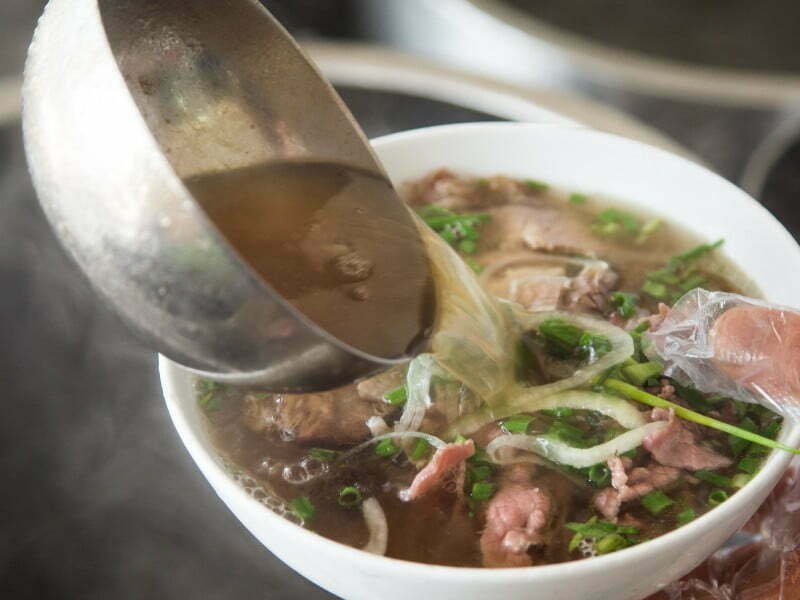
Pho: Origins and Cultural Significance of Pho in Vietnam
Pho, the essence of Vietnamese cuisine, carries a rich history and cultural significance. Its roots can be traced back to Northern Vietnam in the early 20th century, where it was first popularized as a street food among the working class. Pho’s humble beginnings as a hearty and affordable meal for the masses eventually led to its rise as a national dish and a symbol of Vietnamese culinary heritage.

Elements of Pho
Broth: The Heart and Soul of Pho
At the core of a bowl of pho lies the soul-nourishing broth, typically made from simmering beef bones or chicken with a medley of aromatic spices. The slow and meticulous cooking process extracts the essence of the ingredients, resulting in a fragrant and flavorful base. The beef-based broth offers a rich and savory profile, while the chicken-based version boasts a lighter and more delicate taste. Both variations serve as a canvas for the harmonious interplay of flavors that make pho a truly remarkable culinary experience.
Rice Noodles: Slender Strands of Perfection
Pho is known for its delicate and silky rice noodles, which are a fundamental component of the dish. These slender strands, often flat and linguine-like, are cooked to perfection, offering a soft yet resilient texture. The noodles act as a vessel to absorb the flavors of the broth while adding a satisfying chewiness to each spoonful. The preparation of rice noodles requires skill and precision to ensure they retain their delicate structure and don’t become overly starchy.
Garnishes: A Symphony of Freshness
Pho is incomplete without an array of vibrant garnishes that elevate its flavors and textures. Common garnishes include fresh bean sprouts, fragrant herbs like cilantro, Thai basil, and mint, thinly sliced chili peppers for a kick of heat, and lime wedges that provide a refreshing tang. These garnishes add a burst of freshness, balance, and complexity to each spoonful, allowing you to customize your pho according to your preferences.
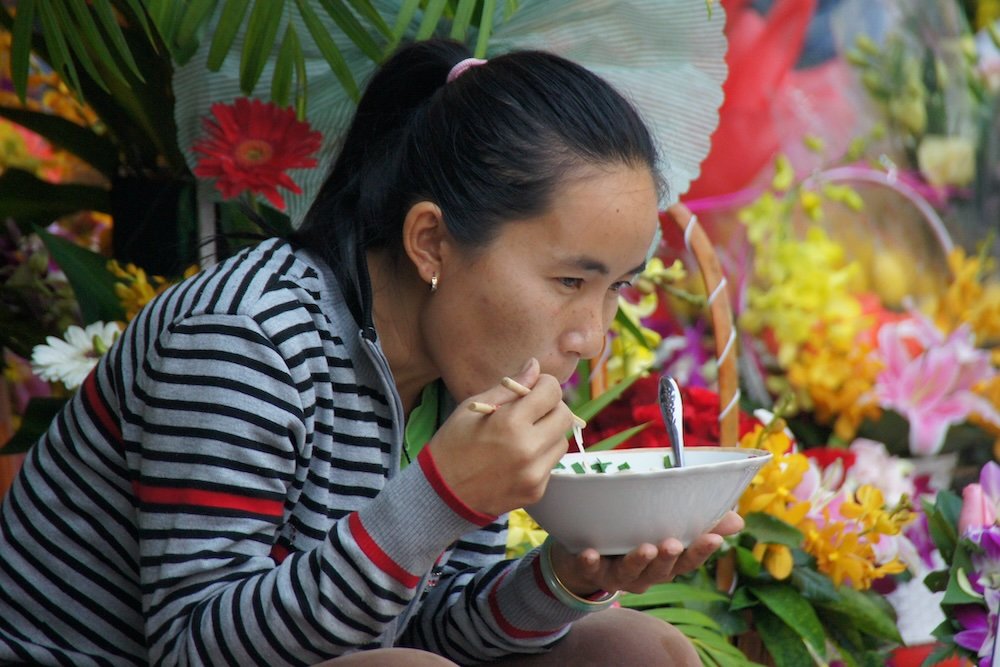
Northern and Southern Styles of Pho
Pho showcases regional variations within Vietnam, with notable distinctions between the Northern and Southern styles. Northern-style pho is characterized by a simpler and clearer broth, allowing the natural flavors of the ingredients to shine through. It is often served with thicker, wider noodles and accompanied by fewer garnishes. On the other hand, Southern-style pho boasts a bolder and more complex broth, often infused with additional spices and herbs. The noodles tend to be thinner, and the garnish selection is more diverse. Both styles offer their own unique charm and contribute to the rich tapestry of pho culture.
Pho as a Comfort Food and Its Global Popularity
Pho’s universal appeal lies in its ability to offer comfort, warmth, and nourishment. Its humble origins as a street food resonated with the Vietnamese people, and it has become an integral part of their culinary identity. In recent years, pho has gained widespread popularity on a global scale, captivating the taste buds of food enthusiasts worldwide. Its delicate yet robust flavors, the harmonious interplay of ingredients, and the comforting nature of the dish have made it a beloved comfort food for many.
Whether enjoyed in a bustling street stall in Hanoi or savored in a trendy restaurant in New York City, a bowl of pho transcends cultural boundaries and brings people together. Its reputation as a wholesome and satisfying meal has cemented its place in the hearts of both Vietnamese locals and international food lovers alike.
Pho embodies the essence of Vietnamese cuisine, weaving together a rich tapestry of flavors, textures, and cultural heritage. From its humble origins to its global popularity, pho continues to captivate food enthusiasts with its soul-nourishing broth, delicate rice noodles, and vibrant garnishes. Its significance as a comfort food extends beyond borders, providing warmth and nourishment to people from all walks of life.
So, the next time you savor a steaming bowl of pho, take a moment to appreciate its origins and cultural significance. Let the fragrant broth, tender rice noodles, and fresh garnishes transport you to the vibrant streets of Vietnam. Pho is not just a dish; it’s a culinary journey that celebrates the flavors, traditions, and shared love for good food.
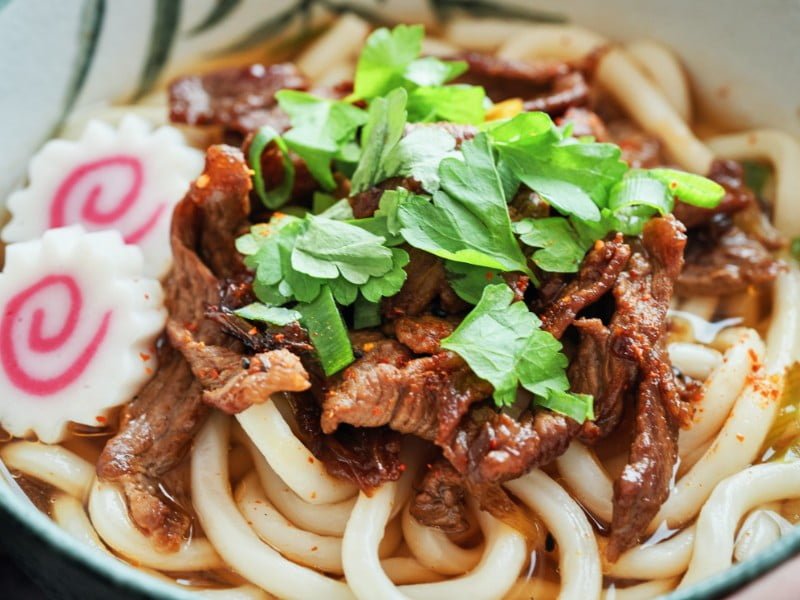
Udon: Historical Background of Udon in Japanese Cuisine
Udon, a beloved staple of Japanese cuisine, has a long and storied history that dates back centuries. Its origins can be traced to the introduction of noodles from China during the Nara period (710-794). Over time, udon developed into a distinct culinary delight in Japan, with regional variations and unique preparations emerging throughout the country. Today, udon holds a special place in Japanese culinary traditions and is celebrated for its versatility and comforting flavors.
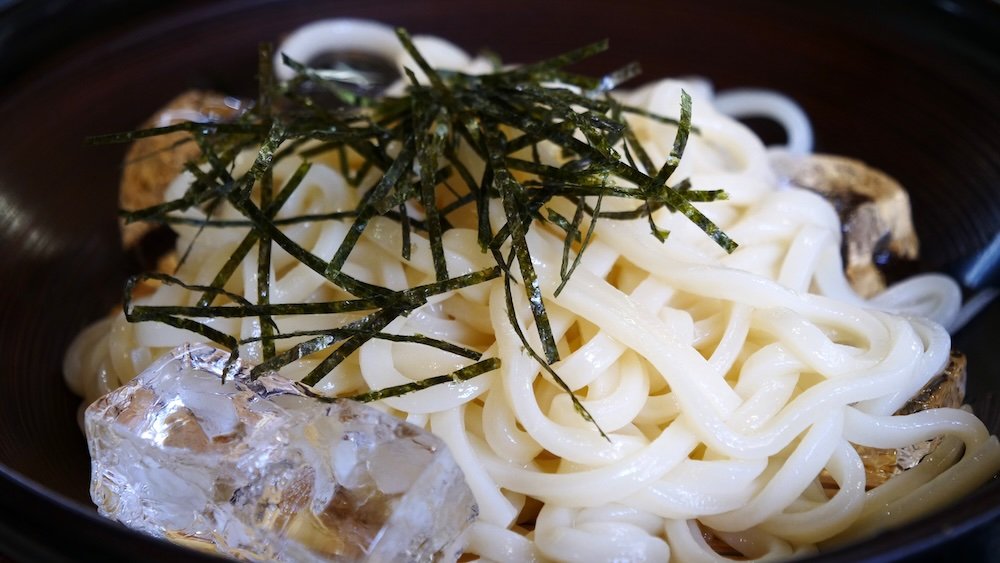
Characteristics of Udon
Broth: Diving into Umami
Udon’s soul-satisfying experience begins with the broth. Traditionally, udon is served with a dashi-based broth, created by simmering kombu (kelp) and bonito flakes to infuse it with a rich umami flavor. The dashi broth serves as a canvas for various flavor profiles. Popular varieties include kakejiru, a soy-based broth that highlights the simplicity and elegance of udon, and kitsunejiru, where sweet tofu accompanies the noodles. The broth sets the stage for the noodles to absorb the umami essence, creating a harmonious and comforting bowl of goodness.
Noodles: Thick and Chewy Delights
What sets udon apart from other noodle dishes is its thick and chewy noodles. Made from wheat flour, udon noodles have a unique texture that delights the senses. The thickness can vary, ranging from the standard chewy udon to the thinner and more delicate inaniwa udon. The noodles are often boiled until they achieve a tender yet springy consistency. This balance of softness and chewiness enhances the overall enjoyment of the dish and allows the noodles to hold up well to the robust flavors of the broth.
Accompaniments: A Symphony of Flavors
Udon is accompanied by an array of delightful toppings and condiments that complement the noodles and broth. Tempura, crispy and golden-battered seafood or vegetables, adds a satisfying crunch and a burst of flavor. Thinly sliced green onions bring a fresh and aromatic note, while grated ginger provides a hint of warmth and spice. Other condiments, such as sesame seeds, shichimi togarashi (seven-spice blend), and bonito flakes, can be sprinkled on top to add depth and complexity to each mouthful. These accompaniments create a symphony of flavors that enhance the udon experience.
Regional Udon Specialties in Japan
Just like ramen, udon has regional specialties that showcase the diverse culinary landscape of Japan. In Kagawa Prefecture, Sanuki udon takes the spotlight, featuring thick, chewy noodles served with a soy-based dipping sauce. In Akita Prefecture, Inaniwa udon stands out with its delicate, hand-stretched noodles. Other regions have their own unique twists, such as Kansai-style udon with its creamy broth and Hiroshima-style udon featuring yakisoba noodles and a sweet soy-based sauce. Exploring these regional specialties allows you to embark on a culinary journey through the diverse udon landscape of Japan.
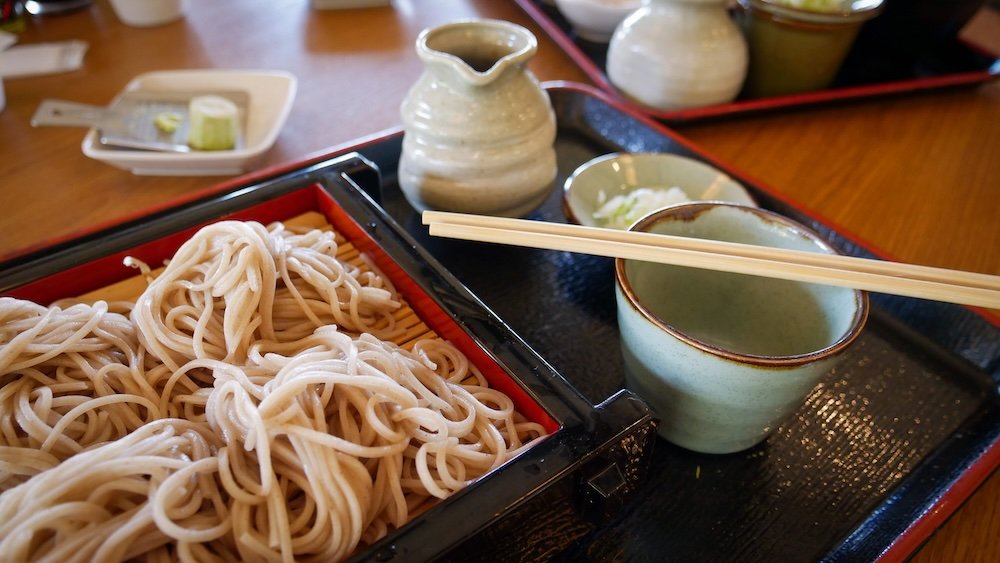
Udon as a Versatile Dish and Its Health Benefits
Udon’s versatility is one of its greatest strengths. It can be enjoyed in various forms, such as hot in a comforting bowl of broth or chilled in a refreshing summer dish. Udon also serves as a canvas for creativity, accommodating different ingredients and flavors to suit individual preferences. Furthermore, udon offers health benefits as a nourishing and balanced meal. The wheat-based noodles provide energy and dietary fiber, while the broth’s umami components contribute to a satisfying and flavorful experience. Udon’s versatility and nutritional value make it a popular choice among individuals seeking a wholesome and fulfilling meal.
In conclusion, udon embodies the rich culinary heritage of Japan, showcasing a harmonious blend of flavors, textures, and regional specialties. Its thick and chewy noodles, umami-rich broths, and delightful accompaniments create a culinary experience that is both comforting and satisfying. From the historical roots to the versatility it offers, udon continues to captivate the taste buds and nourish the body.
So, whether you find yourself slurping a piping hot bowl of udon in a traditional noodle shop or savoring a chilled version on a summer day, embrace the unique charm and flavors of this beloved Japanese dish. Udon is more than just a meal; it’s a culinary journey through the vibrant tapestry of Japanese cuisine.
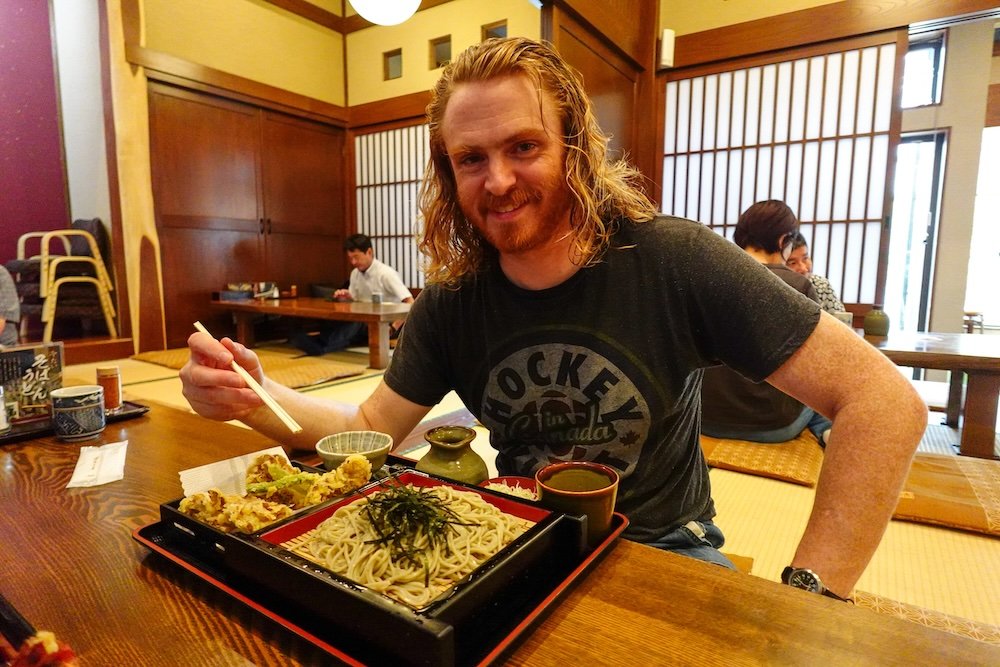
Comparison of Ramen, Pho, and Udon
Broth: Flavor Profiles and Base Ingredients
Ramen, pho, and udon each have distinct broth profiles that contribute to their unique flavors. Ramen boasts a wide range of broths, from the rich and creamy tonkotsu to the savory shoyu and the tangy miso. These broths are typically made using pork bones, soy sauce, and miso paste, respectively. Pho, on the other hand, features a fragrant and aromatic broth made from simmering beef bones or chicken with spices like star anise and cloves. Udon usually employs a dashi-based broth, derived from kombu (kelp) and bonito flakes, resulting in a delicate umami flavor.
Noodles: Texture, Shape, and Taste
The noodles used in ramen, pho, and udon also play a crucial role in defining their character. Ramen noodles are typically long, thin, and chewy, offering a delightful texture that varies based on cooking time and preferences. Pho noodles are flat, linguine-like rice noodles that provide a tender and silky mouthfeel. Udon noodles, on the other hand, are thick and chewy wheat noodles, known for their hearty and satisfying bite. Each type of noodle adds its own unique dimension to the dish, enhancing the overall experience.
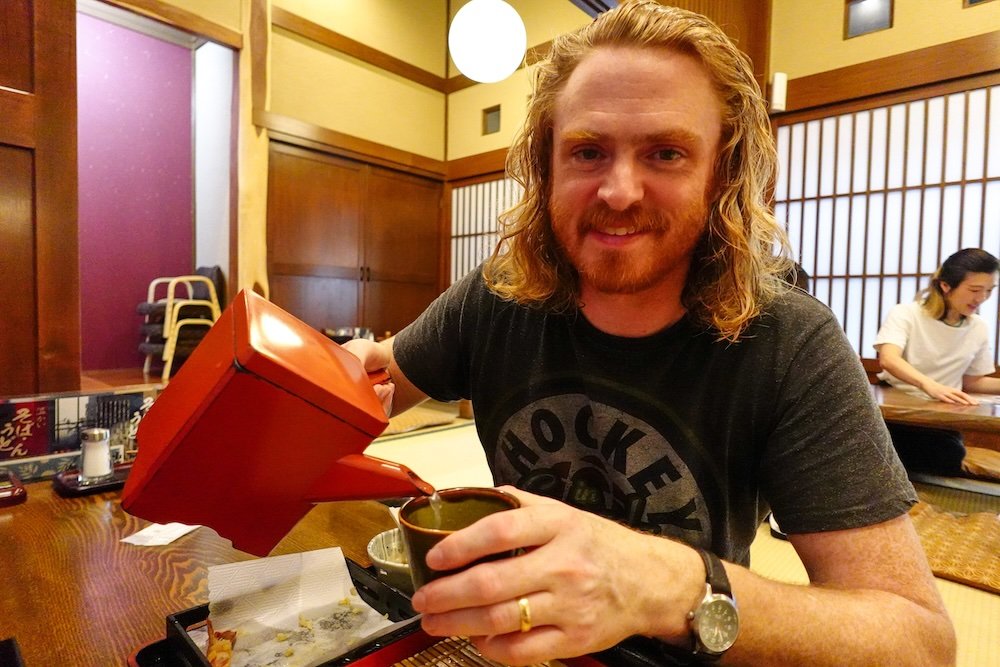
Toppings and Garnishes: Variations and Complementary Flavors
Toppings and garnishes are integral to the flavor profiles of ramen, pho, and udon, providing an array of textures and tastes. Ramen can be adorned with tender slices of chashu pork, marinated soft-boiled eggs, nori, and an assortment of vegetables. Pho traditionally features garnishes such as fresh bean sprouts, aromatic herbs like Thai basil and cilantro, lime wedges, and sliced chili peppers. Udon toppings often include tempura, thinly sliced green onions, grated ginger, and sesame seeds. These additions not only enhance the visual appeal of the dish but also offer complementary flavors and textures.
Cultural Context and Eating Customs
Ramen, pho, and udon hold significant cultural importance in their respective origins. Ramen is deeply rooted in Japanese culinary traditions and has evolved into a global phenomenon. Pho is an iconic dish in Vietnamese cuisine, symbolizing the country’s history and heritage. Udon represents a traditional comfort food in Japan, enjoyed in a variety of regional styles. Each dish carries unique cultural customs and eating practices, such as slurping ramen noodles to express appreciation or adding fresh herbs to pho for added freshness.
Accessibility and Popularity Worldwide
Ramen, pho, and udon have gained popularity worldwide, transcending cultural boundaries and capturing the hearts of food enthusiasts. Ramen has become a global culinary sensation, with ramen shops popping up in cities around the world. Pho has also garnered a devoted following, with Vietnamese restaurants showcasing this beloved dish in various corners of the globe. Udon, while slightly less ubiquitous, has gained recognition and is increasingly sought after by those seeking a taste of Japanese cuisine. The accessibility and popularity of these noodle soups speak to their universal appeal and the recognition of their delectable flavors.
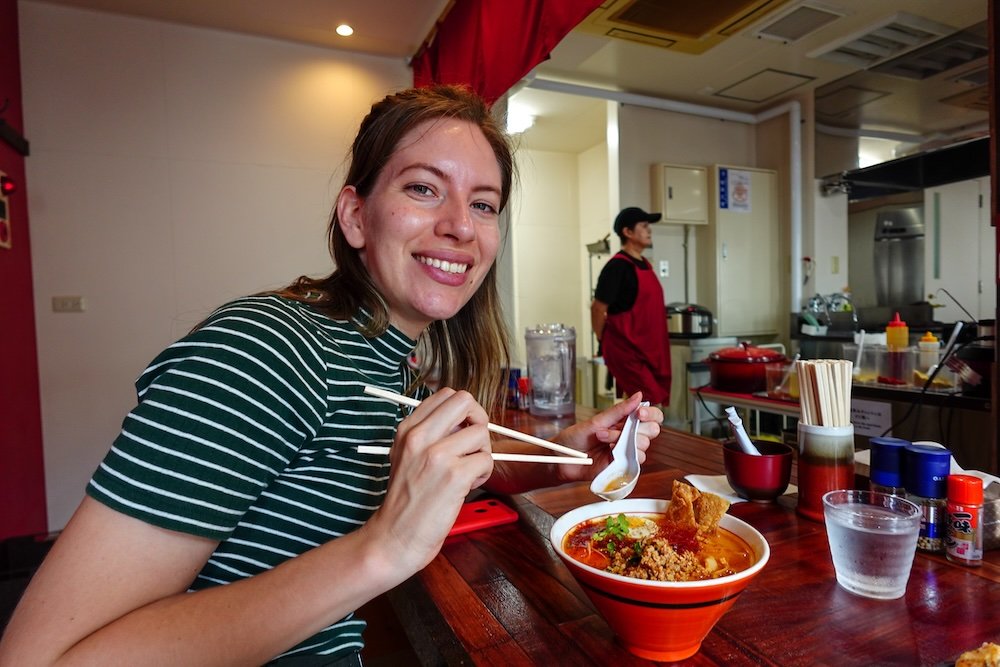
Turning Noodle Soups into a Travel Game Plan
If you’re anything like me, you don’t just eat ramen, pho, and udon.
You plan days around them.
These bowls are more than comfort food – they’re anchors for your itinerary. You can structure mornings, afternoons, and late nights around where you’re going to slurp next, and suddenly your “food break” becomes a cultural deep dive.
Think of each bowl as a lens:
- Ramen shows you Japan’s obsession with detail and regional pride.
- Pho drops you right into Vietnam’s street life and rhythm of the day.
- Udon slows everything down and reminds you that simple can still be deeply satisfying.
Once you start planning travel around noodle shops, cities feel different. Streets become routes between bowls.
And that’s not a bad way to travel.
Where to Base Yourself for Great Ramen, Pho, and Udon
You don’t need to visit every city in Japan or Vietnam to eat well. If you pick the right bases, noodle magic comes to you.
Best City Bases for Each Noodle
| Dish | Ideal Base City (Country) | Vibe | Why It’s Great for Noodles |
|---|---|---|---|
| Ramen | Tokyo (Japan) | Urban, fast-paced, endless variety | Every style under the sun, from old-school shoyu to crazy fusions |
| Ramen | Sapporo (Japan) | Snowy winters, hearty bowls | Famous for miso ramen and buttery, corn-topped bowls |
| Pho | Hanoi (Vietnam) | Classic, cooler mornings, serious broth culture | Northern-style pho: clear broth, minimal garnish, big flavor |
| Pho | Ho Chi Minh City (Vietnam) | Busy, humid, late-night energy | Southern-style pho: more herbs, more garnish, more customization |
| Udon | Kagawa / Takamatsu (Japan) | Laid-back, countryside-meets-city | Known as “Udon Prefecture,” self-serve shops everywhere |
| Udon | Osaka (Japan) | Casual, food-obsessed, fun | Great udon, plus okonomiyaki and takoyaki between bowls |
If you’re building a noodle-focused trip, you could honestly do:
- Japan: Tokyo + Sapporo + Osaka
- Vietnam: Hanoi + Ho Chi Minh City
And be set for weeks.
What a “Noodle Day” Actually Looks Like
You don’t need to eat three giant bowls in one day (though no judgement if you do). A more realistic “noodle day” might look like this:
Sample Noodle Day in Tokyo (Ramen + Udon)
- Breakfast: Convenience store onigiri or coffee – keep it light.
- Late Morning: Simple, light shio or shoyu ramen at a neighborhood shop.
- Afternoon: Walk it off in a park or around a shrine. Maybe a snack, but keep space.
- Early Evening: Udon at a standing bar or self-service spot near a train station.
- Late Night (optional): Heavier tonkotsu ramen or spicy miso in a tiny shop with a line of salarymen.
Sample Noodle Day in Hanoi (Pho All the Way)
- Early Morning (6–9 a.m.): Pho with locals – breakfast is when the magic happens.
- Midday: Coffee, banh mi, or light rice dishes.
- Late Afternoon: Another bowl of pho at a different spot to compare broth, noodles, and herbs.
- Evening: Something non-noodle for variety, or a lighter bowl like chicken pho (pho ga).
The key is pacing. You want to be excited for each bowl, not defeated by lunchtime.
How to Find the Good Stuff (Without Overthinking It)
You don’t need to be a food snob, but a few simple rules will save you from forgettable bowls.
Quick Noodle Shop Checklist
When you’re standing outside a ramen, pho, or udon place, look for:
- Locals over tourists – if everyone has a guidebook or giant camera, be cautious.
- Short menu – a good noodle shop usually focuses on a few things.
- Turnover – bowls coming out fast and tables flipping regularly.
- Smell – if the broth aroma hits you on the sidewalk in a good way, you’re probably fine.
Red Flags
- Massive laminated menus with endless fusion options.
- Photos that all look strangely identical and overly polished.
- Staff trying aggressively to pull you in off the street.
- Lukewarm broth or limp noodles on neighboring tables.
Trust your gut. And your nose.
Ordering Like You Know What You’re Doing
Each bowl has its own little dance. Learn the basics and you’ll feel much less awkward.
Ramen Shop Survival Guide (Japan)
- Ticket machines:
Many shops make you buy a ticket from a vending machine at the entrance. Insert cash, press your choice, hand the ticket to the staff. - Base decisions:
- Broth: shio (salt), shoyu (soy), miso, tonkotsu (pork), sometimes spicy versions.
- Noodles: you can sometimes request firmness: kata (firm), futsu (normal), yawame (soft).
- Add-ons:
Extra chashu, extra egg, more green onions, or corn/butter in Hokkaido.
Don’t be afraid to copy what the person in front of you orders. It’s often the house favorite.
Pho Etiquette and Customization
- Broth comes first.
Always taste the broth before you start dumping in sauces. It’s the chef’s work of art. - Herbs and crunch:
Add bean sprouts, basil, and herbs bit by bit. You can always add more. - Sauces:
- Chili for heat.
- Hoisin sauce for sweetness – great with beef, but easy to overdo.
- Don’t stir everything into mud.
Build your bowl as you go, adding herbs and lime little by little.
Udon Quirks in Japan
- Self-service lines:
In many udon shops, you:- Choose hot or cold udon.
- Pick your noodle size.
- Add tempura or side dishes from trays.
- Pay at the end of the line.
- Toppings bar:
Free green onions, tenkasu (tempura crumbs), and pickles are common. Add a bit, not the entire container.
It’s fast, fun, and very forgiving. Even if you mess up, you still get noodles.
Budget Expectations: What You’ll Actually Pay
Prices change, but noodle soups are still some of the best-value meals you can get while traveling.
Rough Price Comparison
| Country / Dish | Street Stall / Simple Shop | Midrange Specialist Shop | Splurge Experience |
|---|---|---|---|
| Japan – Ramen | US$5–8 equivalent | US$8–12 | US$15–20+ (famous shops) |
| Japan – Udon | US$4–7 | US$7–10 | US$12–15 (multi-dish sets) |
| Vietnam – Pho | US$1.50–3 | US$3–5 | US$7–10 (fancy spots) |
| Western Cities | US$10–18 | US$15–22 | US$25+ with drinks |
You can absolutely eat noodles once or twice a day in Japan or Vietnam without destroying your budget. In big Western cities, they become more of a treat than a default.
Light vs Heavy: Picking the Right Bowl for the Right Moment
Some bowls knock you out. Others keep you light on your feet. Picking the right one can be the difference between exploring all afternoon or needing a nap.
Noodle Mood Matrix
| Situation | Best Choice | Why It Works |
|---|---|---|
| Early morning, still waking up | Pho (light beef or chicken) | Gentle broth, herbs, not overly rich |
| Hot, humid afternoon | Cold udon or light shio ramen | Refreshing, less fatty, easier on the stomach |
| Freezing winter evening | Tonkotsu ramen or miso ramen | Rich, fatty, sticks to your ribs |
| Need something quick and filling | Udon with tempura | Fast, hearty, easy to eat and move on |
| Late-night post-drink hunger | Tonkotsu ramen | Salty, rich, exactly what your slightly fuzzy brain wants |
| Want comfort but not a food coma | Chicken pho or simple udon | Satisfying without going overboard |
Match your bowl to your day. Your future self will thank you.
Vegetarian, Vegan, and “Spice Wimp” Strategies
If you don’t eat meat, or you’re not exactly a chili warrior, you can still enjoy noodle culture. You just need a game plan.
Vegetarian and Vegan Noodle Tactics
- Ramen:
- Look for veggie or miso-based bowls at more modern or “craft” shops.
- Ask if the broth is made with pork or chicken bones – often it is, even if the toppings are vegetables.
- Pho:
- Some places offer tofu pho or vegetable pho, but the base broth may still be meat-based.
- If fully vegetarian is important, choose restaurants that clearly advertise it or specialize in vegetarian Vietnamese food.
- Udon:
- Dashi broth often contains bonito (fish). If you’re okay with fish but not meat, you’re fine. If not, look for specifically vegetarian menus in larger cities.
You won’t always find a perfect vegetarian bowl on the first try, but big cities usually have at least a few solid options.
Handling Spice Levels
- Always assume the local “medium spicy” is hotter than your “medium spicy” back home.
- For pho and ramen, you can usually start with no added chili and adjust at the table.
- For explicitly spicy ramen styles, you can sometimes choose a level. If you’re unsure, start low. You can always add chili oil later.
It’s supposed to be enjoyable, not a death challenge.
Short, Slurp-Focused Itineraries You Can Steal
You don’t need a full “food tour” booking to turn a day into a noodle adventure. You can do it yourself.
1-Day Ramen Crawl in Tokyo
Morning:
Start with a classic, lighter bowl near your accommodation – shoyu or shio. Pick a place that opens early, often around 10 or 11 a.m.
Midday:
Walk a couple of neighborhoods over. Visit a second shop that’s known for a different style, maybe miso or a chicken-based ramen. Split a bowl between two people if you’re worried about getting full.
Late Afternoon:
Explore a non-food area: a park, a shrine, or a shopping street. Drink water, maybe grab a coffee.
Evening:
Head to a famous or tiny hole-in-the-wall tonkotsu shop for a final bowl. If you’re still hungry, order kaedama (extra noodles) once you finish the first batch of noodles but still have broth left.
You’ve just “tasted” three different versions of Japan without leaving one city.
Classic Pho Day in Hanoi
Early Morning:
Pick a pho spot that’s popular with locals before 9 a.m. Watch how everyone eats, how fast they are in and out. That’s your masterclass.
Late Morning:
Stroll around the lake or through the Old Quarter. Street coffee, egg coffee, or simple black coffee for a caffeine jolt.
Early Afternoon:
Try a totally different pho spot – maybe one known for chicken rather than beef. Compare the broth clarity, spice aroma, noodle texture.
Evening:
Switch it up with another Vietnamese dish if you want variety, or go for a third, very casual, pho spot if you’re fully committed.
By the end, you’ve built your own internal “pho calibration” for life.
Half-Day Udon Mission in Kagawa / Osaka
Late Morning:
Visit a self-service udon spot where you choose noodle size, pick tempura from trays, then customize with toppings. Take your time and watch locals move through the line.
Afternoon:
Walk, explore, maybe hit a castle, shrine, or covered shopping arcade.
Early Evening:
Choose a second udon shop that does something different – maybe curry udon, or a place known for cold noodles with dipping sauce. Compare textures and broths.
Udon days are slower, softer, and usually cheaper. Very easy on the wallet and the stomach.
Common Noodle Mistakes (and How to Dodge Them)
When you’re bouncing between countries and bowls, a few missteps are almost guaranteed. But you can avoid the worst of them.
Mistake 1: Overloading on Toppings and Sauces
You don’t need to turn your bowl into a chaotic swamp.
- Start simple.
- Taste the broth first.
- Add herbs, lime, chili, or sauces a bit at a time.
Mistake 2: Only Eating in Tourist Areas
The “safe-looking” restaurant right next to a landmark is rarely where locals go.
- Walk a few blocks away from the main attraction.
- Follow lunchtime crowds that seem to be office workers or families.
- Be okay with slightly less English on the menu in exchange for better food.
Mistake 3: Eating Too Fast, Too Heavy, Too Often
Noodle soups can sneak up on you. Especially the rich ones.
- Alternate heavy bowls (tonkotsu, miso, curry udon) with lighter ones (shio ramen, chicken pho, simple udon).
- Drink water between bowls.
- Share when you can – half portions between two people mean you can try more places.
Mistake 4: Avoiding Places Because You Feel Intimidated
Yes, vending machines and loud, fast-paced shops can feel overwhelming. But once you’ve done it once or twice, it becomes fun.
If you’re lost:
- Look at what other customers are ordering.
- Point at the picture or gesture to the bowl you want.
- Smile, be patient, and accept that a bit of confusion is part of the story.
Building Your Own “Global Noodle Map”
The best part of falling in love with ramen, pho, and udon is that they start showing up everywhere in your travels.
Soon you’ll have:
- A favorite Tokyo backstreet ramen shop.
- A Hanoi corner where the pho never misses.
- A little udon spot near a train station that felt like home for half an hour.
Keep mental notes. Snap photos of shop fronts. Save pins on your map app. Over time you build a noodle trail that stretches across countries and years.
And then, anytime life feels a bit heavy, you know exactly what to do.
Find a bowl.
Sit down.
Slurp.
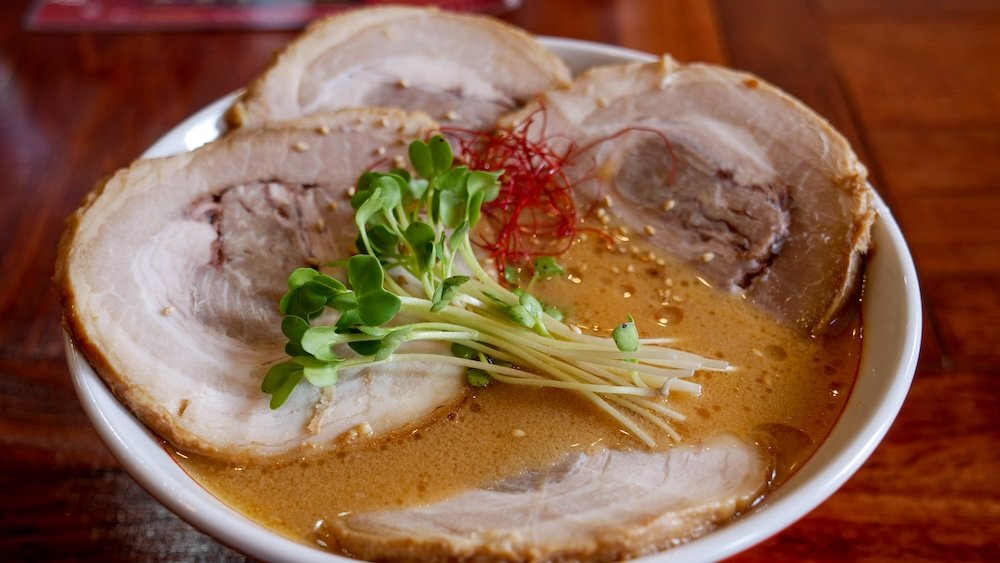
Noodle Soup Travel Questions Answered: Ramen, Pho & Udon Tips for Hungry Travelers
Is it realistic to plan a whole trip around ramen, pho, and udon?
It depends. If food is one of your main reasons for traveling, then absolutely yes – you can build entire days, or even a whole itinerary, around noodle stops without it feeling forced. In Japan and Vietnam especially, ramen, pho, and udon are so woven into daily life that chasing bowls naturally takes you through different neighborhoods, markets, and times of day. You’ll find yourself exploring backstreets near train stations, joining early-morning locals over pho in Hanoi, or lining up with salarymen for late-night ramen in Tokyo. It ends up feeling less like “food tourism” and more like letting noodle shops guide you into the local rhythm.
How many days should I spend if I want a noodle-focused trip in Japan and Vietnam?
Absolutely. You can do a fun noodle “taster” in as little as a week, but things get really good around 10–14 days. A simple split could be 5–7 days in Japan (Tokyo plus either Sapporo or Osaka) and 5–7 days in Vietnam (Hanoi plus Ho Chi Minh City). That gives you time for several ramen styles, chilled or hot udon, and both northern and southern pho without racing from bowl to bowl. The key is to mix noodle days with lighter sightseeing days so you don’t burn out your appetite or your energy.
What are the best base cities for trying authentic ramen, pho, and udon on one trip?
For a classic “global noodle” combo, I’d base in Tokyo, Osaka, Hanoi, and Ho Chi Minh City. Tokyo gives you endless ramen variety plus solid udon; Osaka adds that casual, food-obsessed vibe with great udon and street snacks. Hanoi drops you into the heart of northern pho culture with misty mornings and clear broths, while Ho Chi Minh City brings bolder flavors, more herbs, and late-night bowls. If you want to go deeper on udon specifically, swapping Osaka for Kagawa (Takamatsu) is like entering udon heaven.
When is the best time of year to travel for noodle soups without suffering in the heat?
It depends. For Japan, I love ramen and udon in the cooler shoulder seasons: roughly spring (March–May) and autumn (late September–November). You get crisp air, changing leaves or spring blossoms, and those rich broths feel like a warm hug instead of punishment. Vietnam can be hot and humid, so many travelers prefer cooler, drier months like November to March, especially in Hanoi. That said, locals happily eat pho year-round; in hotter weather you can lean on lighter broths, smaller portions, and air-conditioned shops when you need a break.
How much should I budget per day if I want one or two noodle bowls while traveling?
Roughly speaking, in Japan I’d plan around the cost of one midrange restaurant meal per bowl, and in Vietnam more like a cheap, everyday lunch. Think of a typical day as one “feature” noodle bowl plus a lighter or cheaper meal: in Japan, that might be a US$8–12 ramen at a well-known shop and a more budget-friendly udon for US$4–8; in Vietnam, you can often eat very well for just a few dollars per bowl at local spots. If you’re traveling in big Western cities, I’d treat noodles as more of a treat and budget closer to a standard sit-down dinner price.
Is it rude to slurp noodles loudly in Japan or Vietnam?
Nope. In Japan, slurping ramen or udon is totally normal and often seen as a sign you’re enjoying the bowl. You’ll hear locals making plenty of noise, especially at busy counter-style shops. In Vietnam, pho is usually eaten a bit more quietly, but nobody is going to flip a table if you slurp a little – just be mindful of your surroundings and the general vibe of the place. As long as you’re not treating your bowl like a drum kit and shouting over everyone, you’ll be fine.
Can I find good vegetarian or vegan versions of ramen, pho, and udon?
It depends. The toppings might look veggie, but the broth is often meat- or fish-based behind the scenes. For ramen, bigger cities in Japan and abroad now have dedicated vegetarian or vegan shops using vegetable, kombu, or soy milks instead of pork bones. With pho, you’ll sometimes see tofu or vegetable pho, but the base might still use beef or chicken stock, so it’s worth asking. Udon is often based on dashi made with bonito flakes, so strict vegans should look for places that clearly advertise vegetarian broths or stick to specialty restaurants that understand plant-based diets.
Are ramen, pho, and udon safe to eat if I have a sensitive stomach?
Mostly. These bowls can actually be gentler than heavy fried foods, but there are a few things to watch. Rich tonkotsu ramen and curry udon can be very fatty and might not be ideal if your digestion is fragile; lighter shio or shoyu ramen, simple udon, or chicken pho are usually easier to handle. Street-side pho in Vietnam is often cooked fresh and hot, which helps, but I still like to choose busy places with fast turnover. If you know certain spices, chilies, or dairy-like toppings bother you, mention it when ordering or keep your bowl simple.
Will I manage to order noodles if I don’t speak Japanese or Vietnamese?
Absolutely. Noodle culture is surprisingly accessible, even with zero language skills. In Japan, many ramen and udon shops use ticket machines with photos or numbers: you put in cash, press a button, and hand over the ticket. Where there’s no machine, pointing at the menu or a plastic display bowl works great. In Vietnam, you can usually say “pho bo” for beef pho or “pho ga” for chicken, and then gesture to sizes or garnishes. Smiles, pointing, and a bit of patience go a long way – and worst case, you discover a surprise favorite.
Is it okay to share one bowl between two people in local noodle shops?
Usually. In many casual places, especially in Japan and Vietnam, staff don’t mind if you share a bowl as long as you’re not taking up a whole table for ages and only ordering one tiny dish. A nice compromise is to order one noodle bowl plus at least one extra side or drink so the shop doesn’t feel shortchanged. If a place has a strict “one order per person” policy (more common at very popular or tiny ramen shops), it’s usually written somewhere or the staff will gently let you know.
Can kids and picky eaters enjoy ramen, pho, and udon too?
Yes. These bowls are incredibly flexible once you know what to ask for. For kids or picky eaters, I like to start with simpler broths (shoyu or shio ramen, chicken pho, or plain kake udon) and keep toppings minimal. You can often ask for less chili, no green onions, or noodles and broth served separately so they can “build” their own bowl. Udon, with its thick, soft noodles, is usually a big hit with younger travelers because it’s easy to eat and not too intense in flavor.
What’s the biggest mistake travelers make when hunting for great noodle shops?
Honestly, it’s sticking too close to major sights and only eating where the menus are covered in tourist photos. The better move is to walk a few blocks away from the main attraction, aim for shops with short menus and steady local traffic, and not obsess over online ratings. Another common mistake is drowning your bowl in sauces before tasting the broth – especially with pho and ramen. Take a few sips first, then adjust; that’s how you actually appreciate what the kitchen worked so hard to create.
How do I balance noodle days with sightseeing so I don’t end up in a food coma?
It depends. I like to think in terms of one “hero bowl” per day plus movement. That might mean a big ramen or pho for either lunch or dinner, then lighter meals or snacks the rest of the time. Try pairing heavy bowls with walking-heavy activities: shrines, parks, and free wandering through neighborhoods instead of back-to-back museum visits. You can also share bowls when you want to try multiple shops in one day – half portions let you compare more places without needing to roll yourself back to the hotel.
What should I pack if I know I’ll be eating a lot of noodle soups on my trip?
Nothing crazy. A small pack of tissues or travel napkins is handy for runny noses and the occasional splash. If you wear glasses, a microfiber cloth is nice after steamy bowls. I also like to bring a lightweight, dark-colored top or layer for heavy ramen days so broth splashes don’t stress me out. If you have a sensitive stomach, your usual over-the-counter stomach meds and maybe a rehydration powder can be comforting backups. Chopstick skills can be practiced at home, but if you really struggle, a small reusable travel fork isn’t the worst idea in the world.
